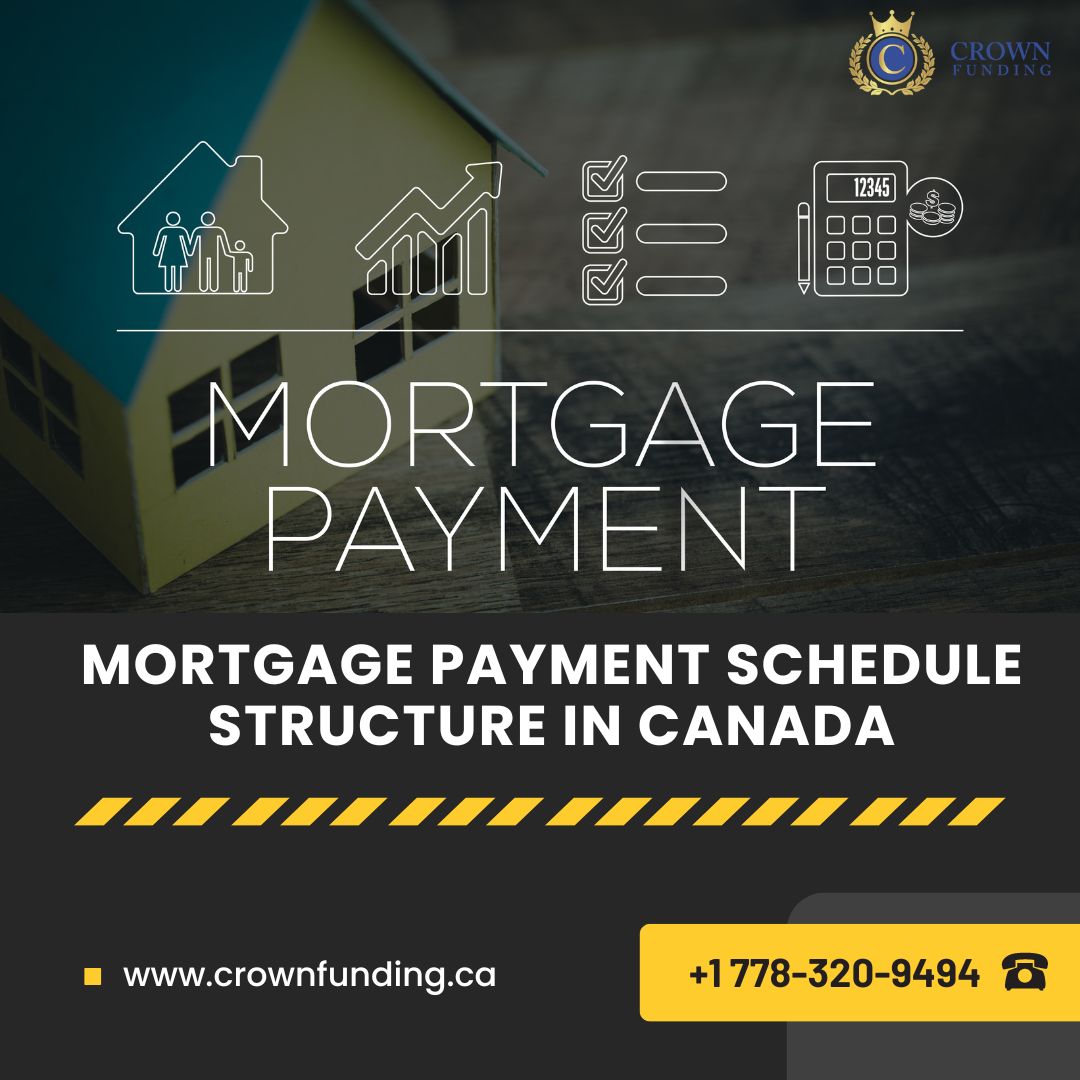
Mortgage Payment Schedule Structure in Canada
A mortgage payment plan, also known as an amortisation schedule, is a blueprint that defines the loan repayment process. When you sign your mortgage contract, your lender will put out a plan that divides your mortgage into equal or nearly equal monthly, weekly, or bimonthly installments. How do you select the best payment plan for you when you can generally negotiate the terms of your mortgage contract?
Organizing Your Mortgage Payment Schedule
A mortgage payment schedule, a comprehensive table of your regular loan payments, displays the breakdown of each cost until the loan is repaid, the amount that will have been paid, and the amount that you will still owe at the end of the loan’s term. The size and frequency of these payments are generally uniform.
There are two typical ways to pay a mortgage. While the second has an interest, the first has both principal and interest.
- The first option divides your capital into principal and interest each time you make a mortgage payment. This is typically referred to as a P&I payout. A second payment for extra costs like real estate taxes or homeowner’s insurance could be required.
- In the second case, the borrower only makes interest payments and pays off the principal once the loan’s term is out. This only typically happens with private mortgage lenders.
The “P” principal represents the leftover balance of your initial loan in the P&I payment option. It doesn’t take any extra expenses into account. Interest is paid with the balance of your payment. You can think of interest as the cost of borrowing money or, even better, as the lender’s gross profit.
Most lenders aim to return their investments as soon as possible to assure profitability. As a result, based on your amortization duration, the payments you make at the beginning of that period will be assigned in favor of the interest category. Keep up with your fees and your lender starts to cover more of the cost of financing your loan, the payment composition will progressively change towards more significant principal amounts, building your equity over time.
It result, when you start making payments, you will see a steady decrease in your balance. However, you’ll note that each payment has a much higher impact on the loan’s actual principal repayment as your amortization period closes.
A mortgage payment plan can be used to determine the most advantageous financial course of action. If you increase the number of payments and reduce the number of installments, you will pay less overall interest throughout the loan. By making a schedule for your mortgage payments, you can decide on the quantity and frequency of your installments that will be most beneficial.
Various Mortgage Payment Schedule Types
Choosing the ideal mortgage payment schedule might take time and effort. There are several factors to consider. For instance, choosing a plan that requires modest monthly payments spread over a longer period can be appealing. However, more extended plans have more significant long-term interest payments. This suggests that it will take longer if you wish to pay your mortgage in full.
To compare several mortgage payment plans, start with a specific program and play with the variables until you find your optimum situation. Alternatively, try out different interest rates or adjust the amount and timing of the installments. Look at the impacts of varying amortization periods as well.
Using this method, you can determine the overall savings produced by selecting one repayment option over another.
How to Boost the Timing of Your Mortgage Payments
If you want to reduce the time between mortgage payments, you can negotiate some of the terms of your contract with your lender. This will make sure your loan satisfies your requirements. Below is a list of some of the changes you might ask for:
Reduce the amortization time: Your amortisation term is often specified in your mortgage contract. It shows how long it will take to finish making P&I payments and pay your loan in full. You can shorten your amortization period by increasing the size or frequency of your payments. A short amortization period will lower your interest costs over the long run.
Your best option if you want a shorter amortization period is to ensure your contract specifies your desired terms.
Many lenders do, however, accept some forms of accelerated payments, like lump sum annual payments up to a specific percentage of the total loan amount or double monthly payments. Most lenders will only let you drastically reduce your amortization time in the middle of your repayment plan since they would lose out on the interest they had previously promised. Speak with your mortgage broker to learn about your prepayment options.
Increase Your Down Payment: Less money must be borrowed the more money you put down. A smaller mortgage will always be quicker and easier to pay off.
Keep Your Interest Rates in Mind: When taking out a mortgage, you typically choose a fixed or variable interest rate.
The market rate is fixed when you agree to a fixed-rate mortgage, which will be applied for the amortization period. This mortgage may shield you from the effects of rising interest rates.
On the other hand, variable-rate mortgages will continuously change their interest rates to follow the market. If rates rise, you will lose, but if they fall, you will gain. Your interest rate will determine how quickly you can repay your loan. Choose the interest rate you think will be most advantageous over the long term. For more updates Visit our Blog Section.
